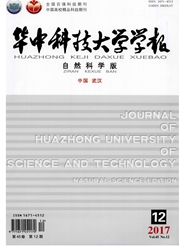

 中文摘要:
中文摘要:
以深水桥梁的两座桥墩为研究对象,考虑混凝土的非线性力学行为,以可有效计入墩-水流固耦合效应的势流体完全数值法为基础建立势流体模型,并引入动水压力简化算法建立附加质量模型.讨论了墩周水域范围及势流体单元尺寸的合理取值,验证了简化算法在深水桥墩非线性动力分析中的有效性.对比讨论了弹性模型、非线性模型动力响应的差别,对比了近、远场地震下深水桥墩非线性动力响应的差异及分布特征.研究结果表明:当地震动峰值加速度(P_(PGA))较小时,桥墩非线性模型与弹性模型的动力响应相一致;随P_(PGA)的增大,非线性模型的墩底弯矩、剪力均小于弹性模型,说明强震下桥墩会进入开裂甚至弹塑性状态,其力学行为与弹性模型差别明显,应该考虑其在强震下潜在的非线性动力行为.近场地震下,深水桥墩的动力响应明显高于远场,墩底弯矩均值分别比远场地震下大80.4%和34.4%,剪力均值分别大23.7%和28.9%,表明近场地震下桥墩会进入更强的非线性状态,对近断层区深水桥梁的抗震设计提出了更高的要求.
 英文摘要:
英文摘要:
With two bridge piers in deep water as examples,the potential-based fluid element models were built,which could consider the dynamic coupling effect of pier-water interaction.The additional mass models were also built by introduction of the simplified expression of hydrodynamic pressure.The material nonlinearity of pier concrete was taken into account in the two kinds of models.The rational water scope and dimension of potential fluid element were studied.The availability of the simplified method of hydrodynamic pressure on nonlinear dynamic analysis of deep-water piers was verified,and the dynamic responses of elastic and nonlinear models were compared.The difference and distribution characteristics of nonlinear dynamic response under near-fault and far-field earthquakes were contrasted.The results show that,the dynamic response of nonlinear piers is in accordance with the elastic model under low peak ground acceleration(P_(PGA))level.As P_(PGA)increases,both the moment and shear force of the nonlinear models become smaller than the elastic models,which means that the piers have cracked or even entered elastic-plastic state.As there are great differences betweenthe mechanical behavior of elastic and nonlinear models,it′s necessary to consider the potential nonlinear dynamic character of pier under strong earthquake.The dynamic response of the piers under near-fault earthquake is much higher than under far-field earthquake.The average moments of pier bottom are 80.4% and 34.4% bigger than far-field earthquake respectively,and 23.7% and 28.9% bigger respectively for average shear forces,which shows the bridge piers will enter stronger nonlinear state under near-fault earthquake and claims higher requirement for the seismic design of deep-water bridge.
 同期刊论文项目
同期刊论文项目
 同项目期刊论文
同项目期刊论文
 期刊信息
期刊信息
